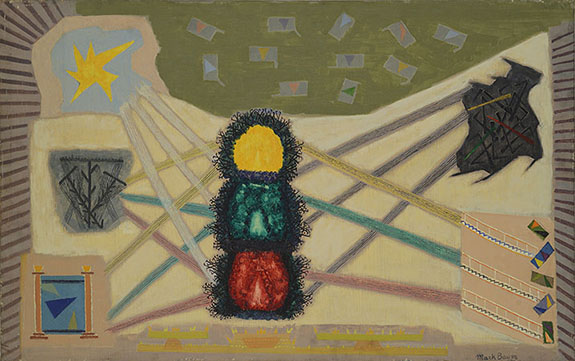 |
 |
.jpg) |
handsaw. It became a kind of proto digital language, a binary form that Baum used to summon a seemingly endless array of associations ranging from mathematical precision (seen in geometrical lines) to swarms of migrating birds to radiant hothouse flowers to mandala-like shapes of the sort found in Tibetan Thangka paintings. Baum, by his own estimation, was a mystic, and his primary urge, both in life and in painting, was to find unity in all things. With the element, a modular and infinitely extensible visual icon, he developed a rule-based method for doing just that — extending Mondrian’s and Kandinsky’s explorations and presaging the now-fashionable urge to unify art and science. As the artist stated in 1982: “Now, with the help of high technology, we are exploring outer space and all the universe. We are all the more aware of its vastness, its endlessness and its greatness. Our sense of awe is reawakened and our spiritual life rekindled. This form of human spirituality is worthy of being subject matter in painting”
Dave, it’s wonderful to see these images and your writing about Baum’s work in SQ. Thank you!